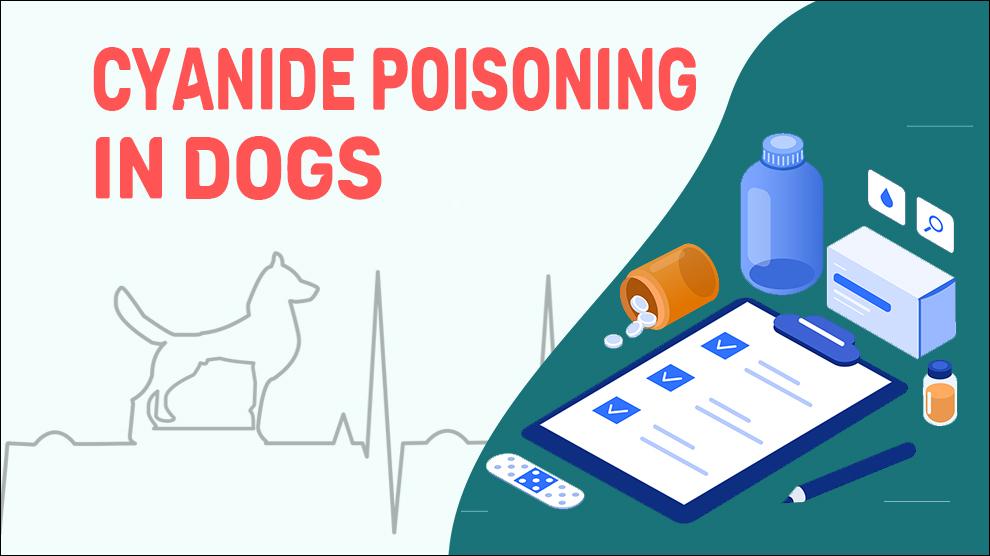Cyanide poisoning is toxicosis due to inhalation or ingestion of cyanide-containing substances. Toxicity can happen through both acute (sudden) and chronic (long-term) exposure to the metal. Toxicity can result from improper, malicious, or accidental exposure or usage.
Cyanide concentrations of <0.5 mcg/mL are considered to be diagnostic of cyanide poisoning. After consumption of toxic forage of cyanide, signs typically occur within 15–20 minutes, and survival after onset of clinical signs is rarely >2 hours.
Common sources of cyanide poisoning include plants, soil sterilizers (cyanamide), rodent poisons (rodenticides), fumigants (such as disinfectants), electroplating, and metal cleaning. Cyanide poisoning is life-threatening and requires immediate care.
Plant cyanogenesis is a common mode of toxicity and almost 300 species are potential causes of chronic and acute cyanogenic poisoning. Toxins are also found in all members of the Prunus genus (such as apricot, peach, and cherry trees). Ornamental members of this genus are often highly poisonous as the seeds, flowers, leaves, and stems are poisonous to dogs (not the fruits). When the cherry tree leaves are chewed upon by the dog, immediately cyanogenic glycoside in the leaves combines with enzymes in the dog and becomes poisonous.
Symptoms Of Cyanide Poisoning
- Hyperventilation
- Bright red mucous membranes
- Fainting
- Nausea/vomiting
- Rapid heart beat
- Muscle fasciculation
- Tremors/ intermittent seizures.
- Ataxia (“drunken” appearing gait)
- Increased urination (polyuria)
- Increased thirst (polydipsia)
- Stupor
- Hyperexcitability
- Regurgitation (due to megaesophagus)
Treatment Options For Cyanide Poisoning
- There may not be any perfect antidotes for most cyanide poisoning. However, quick and effective treatment with the decontamination, monitoring, and supportive care help to minimize the extent and severity of signs.
- Anti-vomiting medication (antiemetics).
- Intravenous (IV) fluids.
- Antacids (e.g., aluminum hydroxide milk of magnesia).
- Anti-seizure medication (e.g., drugs like potassium bromide, phenobarbital, Levetiracetam, Primidone, etc.
- Antidotes: Amyl nitrate and sodium nitrate.
- Detoxification: Thiocyanate and rhodanese through IV fluids.
- Sodium thiosulfate: Stops the production of cyanide in the body.
Home Remedies For Cyanide Poisoning
Cyanide poisoning is irreversible without medical management and doesn’t cure on its own that is why vets emphasize prevention.
- Make sure the pet is breathing and is not further exposed to the poison before you call for emergency assistance.
- Always have a source of clean water available.
Prevention Of Cyanide Poisoning
- Train the dogs to lower the risk of eating the leaves of poisonous plants.
- Clean the outdoor environment as free from dust as possible. Use a damp mop and wipe floors or clean surfaces with a damp cloth.
- If you use any insect or rodent bait in your home, make sure they are in locations not accessible to pets or in secure bait stations.
- Clean up the spills immediately, always apply in small amounts, and spread evenly.
- Use the right Baits and right spot. Many pets also find food baits appetizing.
- Keep away the pets (their toys, bedding, food bowls and water) out of pesticide-treated areas until the pesticide has dried completely.
Affected Breeds Of Cyanide Poisoning
There is no breed disposition.
Additional Facts For Cyanide Poisoning
1. Causes:
- Fruits with pits (apricot, cherries, peaches, almonds)
- Apples/Pears
- Phaseolus lunatus (lima beans)
- Zea mays (corn)
- Various forms of grass
- Clover
- Eucalyptus spp (gum trees)
- Elderberry
- Legumes (vetches)
2. Morbidity:
Lead toxicity mechanism is not yet understood, however, it is mainly absorbed in the gastrointestinal tract. Depending on the form, adult dogs may absorb 5 to 15 percent of lead; puppies’ absorption may be as high as 50 percent.
3. Diagnosis:
- Complete blood count (CBC), blood chemistry profile
- Electrolyte panel
- Urinalysis
- Blood pressure, heart function tests
- Additional tests for kidney or liver
4. Mortality:
Cyanide poisoning in dogs is fatal and the mortality rate is actually higher. Worldwide data is not available; however, country-wise data itself suggests Cyanide poisoning causes high fatality in dogs.
5. Prognosis:
Prognosis in affected dogs is good if treated quickly. Dogs with severe tremors/ seizures have a more guarded prognosis. Mostly, after initial treatment dogs recover within 24 to 48 hours.
When To See A Vet
Contact your vet right away, if you notice any of the following:
- Bright red mucous membranes
- Tremors/ intermittent seizures
- Hyperventilation
Accompanied by Hypersalivation (excessive drooling) and some may roll around their backs.
Food Suggestions For Cyanide Poisoning
- Lean boiled meats
- Chicken baby food
- Plain steamed or baked white fish (whiting, pollock, cod, haddock, etc)
- Mashed potato (softened with fish poaching liquor)
- Skinless, minced chicken or turkey
- Scrambled eggs
- Fibre rich foods: Apples, pears, oatmeal, and other foods
- Rice, sweet potato, mashed banana
Conclusion
When cyanide intoxication is diagnosed in a pet, the owners should act proactively and get their pet prompt treatment, and also they should be warned of the possibility of human exposure to environmental lead.
It is really crucial to find out the source of cyanide to prevent further human or animal exposure.

















